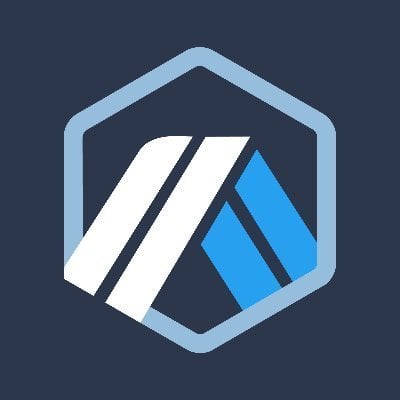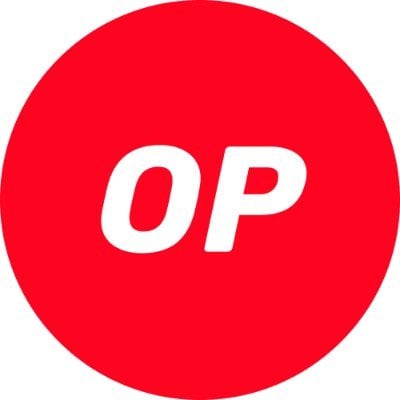Data Interpretation OP Mainnet Development Status: Overall, it still lacks competitive advantages, and the brand collaboration strategy of OP Stack feeds back into the ecosystem
Author: Nancy, PANews
As the Ethereum Cancun upgrade approaches, the market heat in the Layer2 space is rising. Recently, Optimism (renamed OP Mainnet) has achieved remarkable growth in on-chain data with its killer feature OP Stack, becoming the focus of market attention. So, what is the current development status of OP Mainnet? How is it creating its differentiated advantage in the Layer2 battle?
Daily transaction volume and contract numbers have surpassed, but there is still a significant gap with Arbitrum
As one of the two giants in Layer2, OP Mainnet has managed to catch up in some data after being at a disadvantage in the competition with Arbitrum for a long time. In terms of daily transaction counts, OP Mainnet had been lagging behind Arbitrum for the past six months, but recently it has achieved its first surpass. As of August 2, OP Mainnet's daily transaction count was 614,000, while Arbitrum had 599,000.
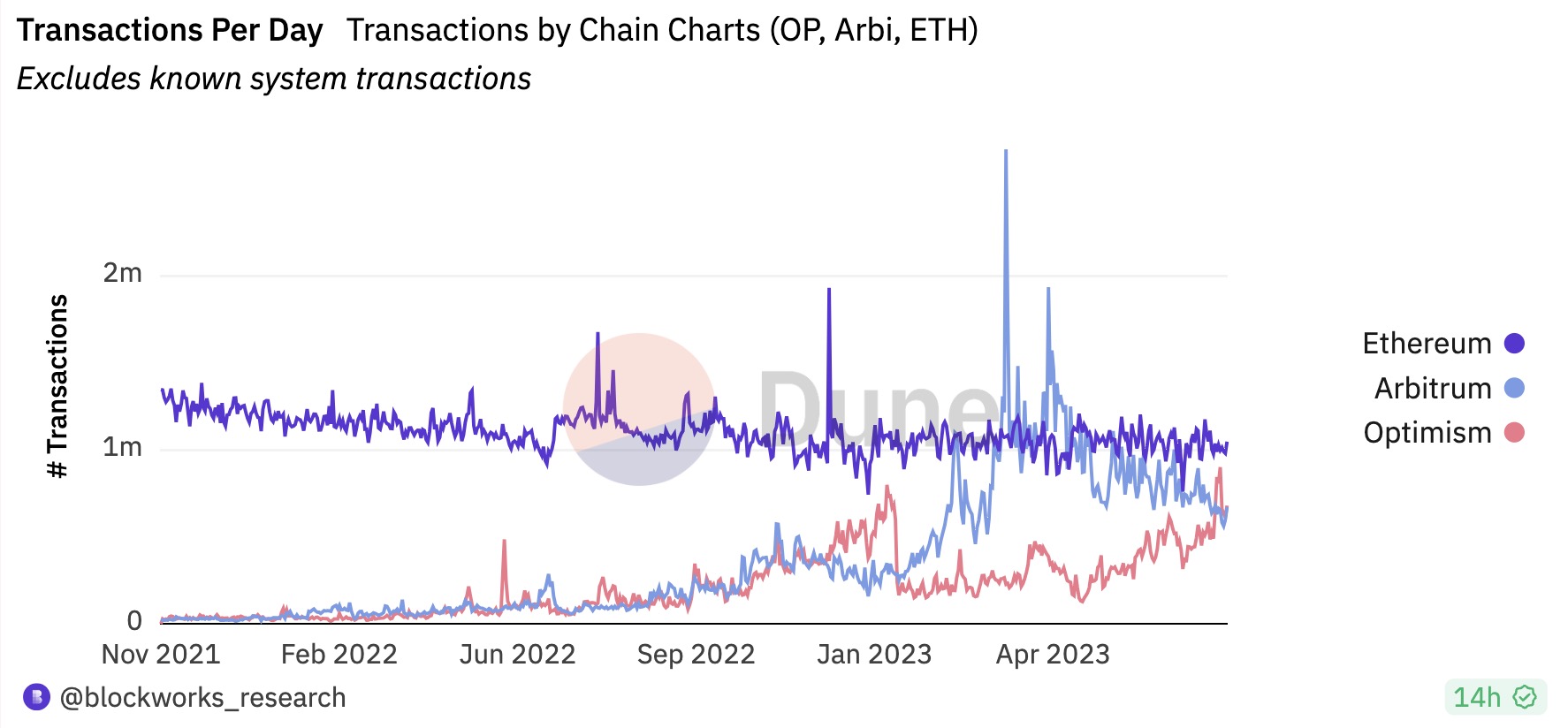
Moreover, OP Mainnet has also seen a significant increase in daily active addresses this year. As of August 2, the number of daily active addresses on OP Mainnet was approximately 103,000, which is about 2.4 times higher than at the beginning of the year. Although it still lags behind Arbitrum by about 36,000, the gap was as high as 137,000 in March this year. Of course, Arbitrum's rapid data decline is also related to the realization of its airdrop expectations.
Additionally, there is a significant gap in contract deployment between OP Mainnet and Arbitrum. Dune data shows that in the past 90 days, the number of contracts deployed on OP Mainnet was around 2 million, while Arbitrum had only about a quarter of that, at 509,000. This indicates that OP Mainnet is currently more favored by developers.

However, in terms of ecosystem and community scale, OP Mainnet still lags behind Arbitrum significantly. On one hand, as of August 2, OP Mainnet had 159 on-chain applications, while Arbitrum had 293. Besides the substantial difference in quantity, OP Mainnet also lacks popular native projects, whereas the latter's ecosystem is more prosperous, featuring quality projects like GMX and Magic. On the other hand, L2BEAT data shows that as of August 2, the total locked value in Ethereum Layer2 was $10.46 billion. Among them, Arbitrum topped the list with $5.86 billion, accounting for 50.1% of the market share; OP Mainnet followed closely with $2.97 billion, holding a market share of 28.4%. Although OP Mainnet's locked value is only about half of Arbitrum's, Arbitrum has been on a downward trend since mid-July, while OP Mainnet has seen significant growth.

From this perspective, although OP Mainnet's ecosystem scale cannot currently compete with Arbitrum, it is building momentum to narrow this gap.
Building a cooperative brand matrix, multiple technologies paving the way for the superchain
In the fierce competition of public chains, Polygon has successfully built its moat by collaborating with traditional mainstream brands like Disney, Reddit, Starbucks, and the NFL. Similarly, OP Mainnet is also following the route of resource cooperation, establishing a cooperative brand matrix through OP Stack to create its unique development path and rapidly develop its ecosystem.
OP Stack is a standardized open-source modular blueprint that can be seen as software components, helping application service developers customize their blockchain networks like building with Lego. With the launch of OP Stack, the war for Layer2 superchains has already begun. Imagine, once OP Stack upgrades OP Mainnet to a superchain, hundreds of OP chains will be integrated into this interoperable and composable system, allowing for seamless sharing of security, communication layers, and development kits among chains, just like the interoperability among DApps in the Ethereum ecosystem.
Thanks to the low-cost construction advantage of OP Stack for Layer2, many projects, including OP Mainnet, Base, opBNB, Zora, Worldcoin, Magi, Loot Chain, OPCraft, Keystone, and Gitcoin, have been deployed through OP Stack, bringing significant traffic.
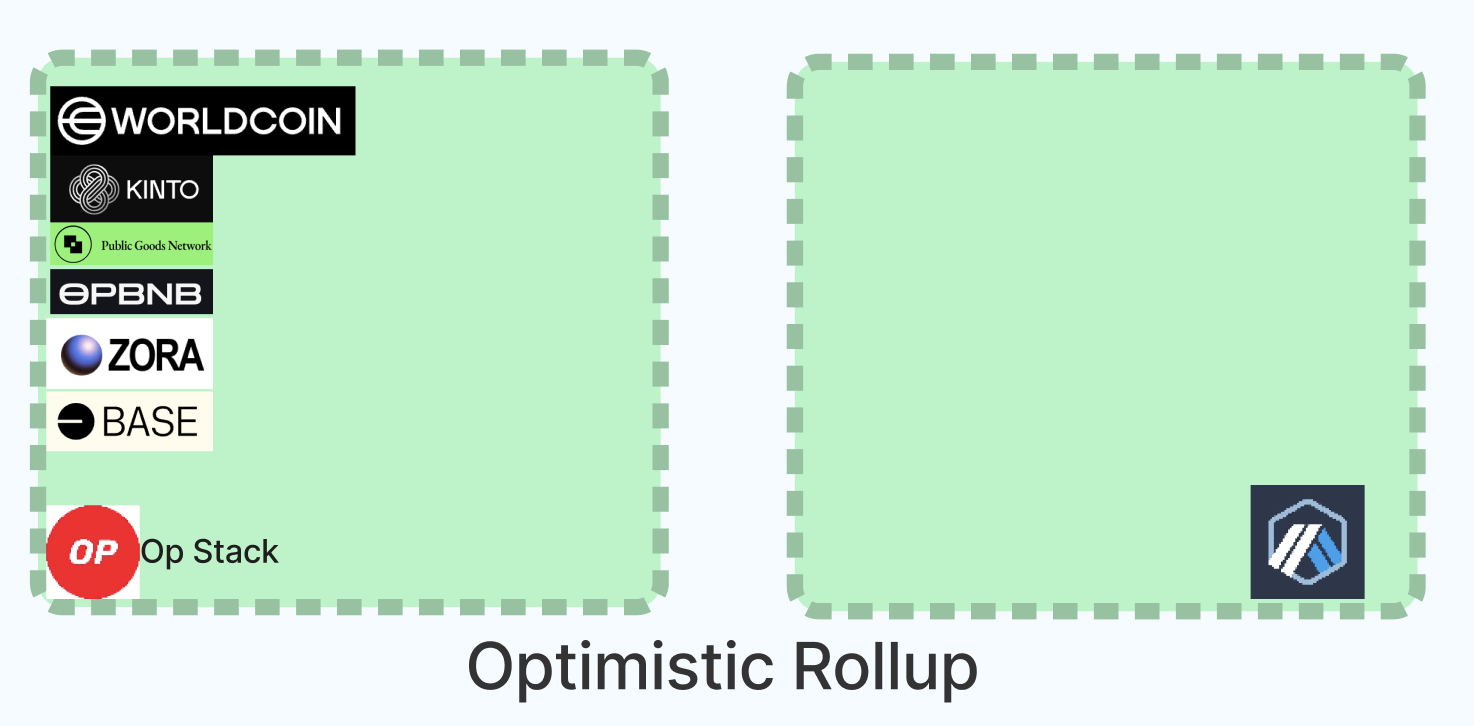
Comparison of OP Stack and Arbitrum Orbit ecosystem cooperation
For example, the star crypto project Worldcoin, initiated by the CEO of OpenAI, has driven the growth of OP Mainnet to some extent after issuing its token recently. Dune data shows that as of August 1, the total number of Worldcoin wallets on OP Mainnet has exceeded 110 million (excluding pre-release wallets that users have not yet migrated to the Optimism chain), with 369,000 OP Mainnet wallets holding WLD tokens.
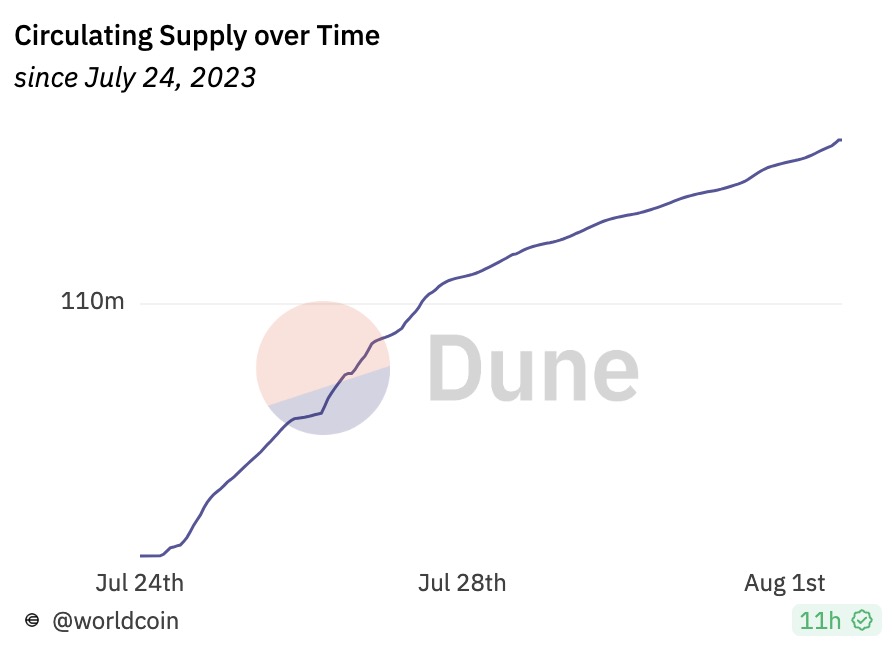
Another example is the Layer2 network Base, built on OP Stack by the crypto trading platform Coinbase. Recently, due to the popularity of the Memecoin project "Bald," it experienced a massive influx of funds, pushing its locked value to over $41 million at its peak. Although currently, due to the BALD project's withdrawal of liquidity and the LeetSwap hacking incident, DefiLlama data shows that Base's TVL has dropped to $8.55 million, a 79.2% decrease from the peak of $41.2 million on July 31, as the second core contributor of OP Stack, Base will return part of its transaction fee revenue to the Optimism Collective treasury, which will continue to provide support for OP Mainnet.
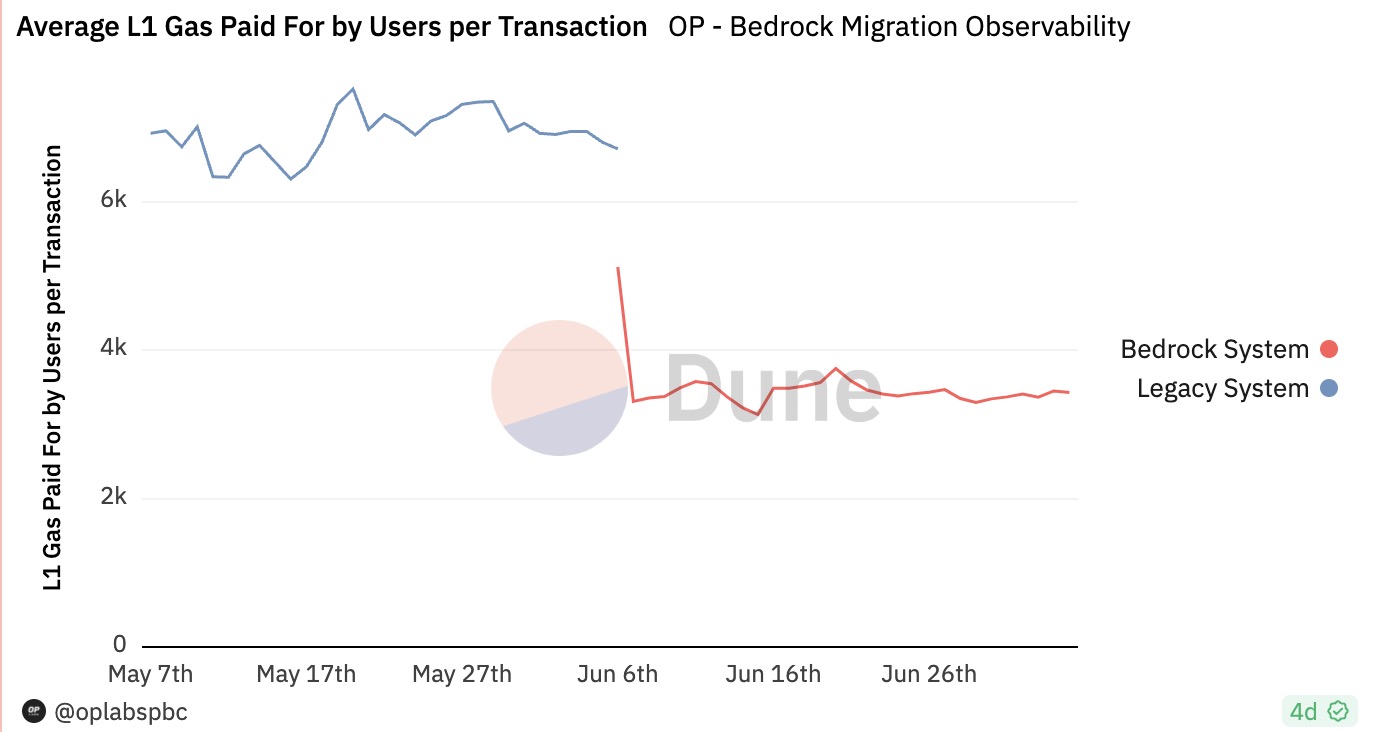
In addition to the ecosystem, OP Mainnet is also making technical advancements. In June this year, OP Mainnet completed the Bedrock upgrade of its mainnet, resulting in an average increase of 54.6% in L1 data fees per transaction compared to before the upgrade, with savings of over 55% for DEX transactions, NFT minting, perpetual contract trading, ERC 20 transfers, and ETH transfers. After this upgrade, OP Mainnet's fees are at an absolute advantage among other Layer2s. According to L2 Fees data, as of August 2, the cost of sending ETH on OP Mainnet is $0.04, while the cost of trading any token is $0.09. As a deep participant in Ethereum EIP-4844, OP Mainnet's fees will further decrease after the "Cancun upgrade," continuing to enhance on-chain cost advantages and paving the way for the superchain narrative.

On July 26, OP Mainnet announced the launch of the Law of Chains, which provides an open and neutral guiding framework for participants in the OP Stack superchain ecosystem, aiming to promote core principles of user protection, decentralization, and economic autonomy. In simple terms, the Law of Chains will allow any project to easily establish its own OP chain through OP Stack, while OP Mainnet can form a sustainable revenue model by charging transaction fees from all projects. Currently, the v0.1 draft version has been submitted for community review, and OP Mainnet plans to formally introduce it into governance in the next season, along with the initial governance process for new chains joining the superchain ecosystem.
From the market response, OP Mainnet's market positioning is gaining recognition, but the achievements made at this stage still lack competitive advantage. Ecosystem construction is an essential path for project development; if it is merely a one-sided effort to "build a city" without users, then even with high valuations and a "prestigious halo," it will ultimately become a "ghost town" for VCs. In the future, OP Mainnet needs to continue to focus on its ecosystem and user growth.






